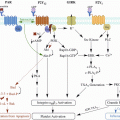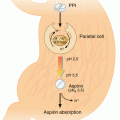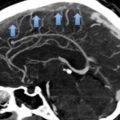© Springer International Publishing Switzerland 2016
Md. Shahidul Islam (ed.)Thrombosis and Embolism: from Research to Clinical PracticeAdvances in Experimental Medicine and Biology90610.1007/5584_2016_101Thromboembolic Prophylaxis for Morbidly Obese Patients Undergoing Bariatric Surgery
(1)
Department of Surgery, University Hospital Rey Juan Carlos, 28933 Madrid, Spain
(2)
Department of Surgical Nursery, Hospital del Sureste, Madrid, Spain
Abstract
Obesity itself is associated with an increased risk of thromboembolic events. Moreover, most bariatric procedures actually are performed by laparoscopic approach, implying an increased intraabdominal pressure during the surgical procedure that may favor the development of thrombus. Therefore, bariatric surgery is considered a high-risk procedure for thromboembolic events. Actual recommendations are to include low molecular weight heparins (LMWH) and compression stockings in the primary prophylaxis of thromboembolic events. Following these measures, a routine screening of thromboembolic complications with imaging tests is not recommended.
Keywords
ObesityBariatric surgeryVenous thromboembolismProphylaxisLow molecular weight heparin1 Introduction
According to the World Health Organization (WHO), there are 1.6 billion overweight and 400 million obese people worldwide. Bariatric surgery has been demonstrated to be the most effective and sustainable method for the regulation of morbid obesity, superior to both pharmaceutical interventions and combinations of diet and lifestyle regimens. Therefore, the number of bariatric procedures performed, mainly in developed countries, is increasing every year [1, 2].
Obesity itself is associated with an increased risk of thromboembolic events. Moreover, most bariatric procedures are actually performed by laparoscopic approach, implying an increased intraabdominal pressure during the surgical procedure that may favor the development of thrombus. Therefore, bariatric surgery is considered a high-risk procedure for thromboembolic events [3, 4].
2 Morbid Obesity as Risk Factor
It has been determined that obesity is associated with a hypercoagulability status. Morbidly obese patients present increased fibrinogen levels that may reach twofold the normal value. It has been proved that venous circulation flow is slower in the infradiaphragmatic territory and especially in the lower limbs. Both facts, associated with disorders in several coagulation factors, favor the appearance of venous thrombosis, thrombophlebitis, and thromboembolic events, mainly pulmonary thromboembolisms (PE), which are the first cause of mortality in obese patients.
Venous stasis and hypercoagulability improve with weight loss, mostly after bariatric surgery. This improvement is achieved several months after the surgical procedure, when an important weight reduction has been obtained. More than 90 % of patients undergoing any bariatric procedure present a relevant reduction of their hypercoagulability.
3 Laparoscopic Bariatric Surgery
Venous thromboembolism is the most common postoperative medical complication after bariatric surgery. The incidence of deep vein thrombosis (DVT) after laparoscopic bariatric surgery is about 3 % and that of pulmonary embolism (PE) is less than 1 %. However, mortality associated with PE is estimated to be between 50 % and 75 %[5, 7]. Venous thrombosis of the portal–mesenteric axis (PSMVT) is considered a rare event after bariatric surgery, but in past years an increased number of case reports of PSMVT after bariatric surgery has been published [8–10].
In laparoscopic abdominal surgery, the increase of intraabdominal pressure by the pneumoperitoneum, the prolonged operation time, and the anti-Trendelenburg position are considered risk factors for venous thromboembolisms. It has been demonstrated that the splanchnic flow is inversely proportional to the pressure of the pneumoperitoneum. Moreover, hypercapnia induces vasoconstriction. Obese patients require higher pneumoperitoneum pressures to obtain an adequate view. It has been also demonstrated that surgical dissection induces the release of procoagulant cytokines. Other causes of venous thromboembolism after bariatric surgery are splenectomy as a surgical complication, intraoperative portal vein lesion, and dehydration, especially after restrictive procedures, when patients hardly drink [11–14].
4 Clinical Manifestations and Diagnosis
Venous thromboembolisms are often a challenging issue for the medical staff. DVT is probably the most easily detected complication associated with venous thromboembolism, as it tends to appear with unilateral pain in the lower limb, associated with gastrocnemic edema and tenderness. DVT alone is not a life-threatening condition, but its main risk is migration of the thrombus and the development of PE. The gold standard method for the diagnosis of DVT is Doppler ultrasonography (US).
PE usually appears with sudden unexplained dyspnea without any relevant features at the physical examination and on X-ray plain films. Laboratory data may show increased levels of D dimers, which present high sensitivity but low specificity for the suspicion of PE. The gold standard test for the diagnosis is a contrast-enhanced thoracic computed tomography (CT) scan showing a filling defect in the pulmonary arteries or their branches.
PSMVT usually present subacutely, occurring between the 3rd and 30th postoperative day. However, chronic PSMVT are usually asymptomatic and unnoticed. Thus, patients can develop liver cirrhosis and their related complications. Between 5 and 15 % of all cases of PSMTV develop a bowel ischemia, with mortality rates around 40 %. PSMVT symptoms are vague and nonspecific. In fact, 50 % are asymptomatic, especially after chronic thrombosis when collateral veins have been developed. Only abdominal pain seems to be a constant symptom. Contrast-enhanced abdominal CT is the gold standard method for the diagnosis of PSMVT, with an accuracy rate of 90 % [11, 13, 15].
5 Antithromboembolic Prophylaxis (Primary Prophylaxis)
Venous thromboembolisms are life-threatening conditions. Several measures, including prophylactic low molecular weight heparins (LMWH) and compressive stockings, are adopted to reduce their incidence. Up to the present there is no consensus about antithromboembolic prophylaxis for patients undergoing bariatric surgery. There is not even any consensus about the optimal dosage of LMWH. The dosage must be adjusted according to the weight of the patient, implying the need of administration of high preoperative doses. Intra- and postoperative bleeding is one of the main complications of bariatric surgery. Many surgeons fear these complications and administer lower doses of LMWH than that recommended by most groups (Enoxaparin 0.5 mg/kg/day or Bemiparin 5000 UI/day or Dalteparin 50 UI/kg/day or Nadroparin 4100 UI/day) [16–19]. However, other authors report that this dose is insufficient because these patients are at high risk of developing thrombotic events [20–22].
The postoperative prolongation of prophylaxis is also a debated issue as some authors defend that a prolongation of 5–7 days is enough, whereas others report the need for maintaining it during 1 month, considering laparoscopic bariatric surgery as a high-risk procedure performed in high-risk patients [23–25].
Stay updated, free articles. Join our Telegram channel

Full access? Get Clinical Tree







